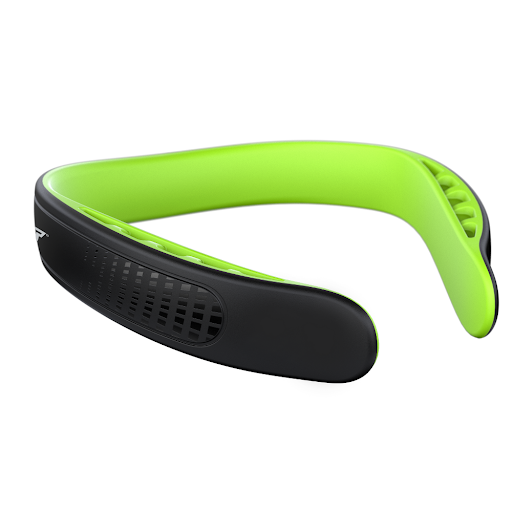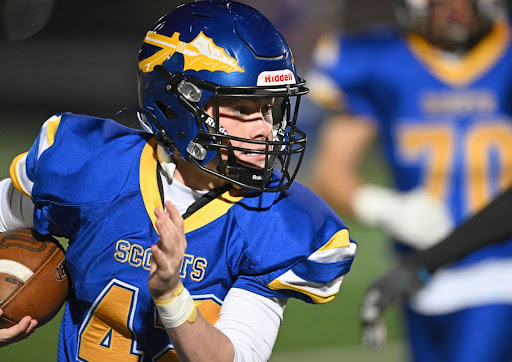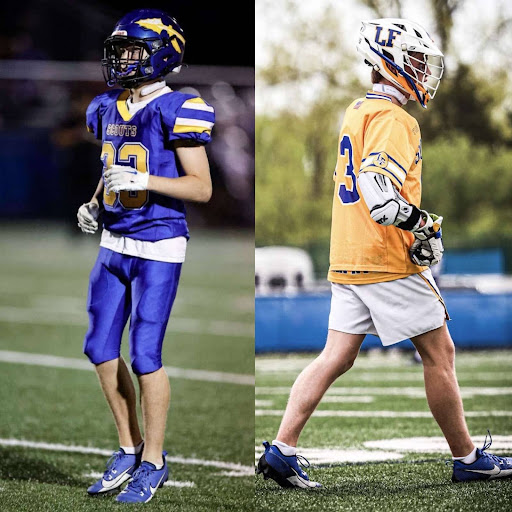A young boy comes home from a long day of school and eagerly asks his mom the question he’d been waiting to ask her all day. “Mom, can I play tackle football?” he says. The mom, fearing the dangers of head trauma from contact sports, guiltily declines his request, crushing his excitement. This is an experience happening all over the United States that is becoming more and more common.
Parents all over the country are becoming more concerned with the risks involved in playing contact sports, such as football, hockey, lacrosse, and soccer. This has caused many of these parents to prohibit their children from participating in these sports with the hopes of protecting their child’s brain for the future. These concerns, though valid, could be taking away sporting experiences from these children that could end up being very enriching. Some companies have tried coming up with products that may lessen the risks of head injuries in these contact sports, and that is exactly what Q30 Innovations has done.
Q30 specializes in the production of a device called the Q-Collar, a silicone collar that applies light pressure to the sides of the athlete’s neck. The Q-Collar is designed to increase blood volume in the brain to give a greater cushion when an athlete takes impact to the head. More and more professional athletes are wearing this device for their own safety.
“The Q-Collar makes me feel like I have an advantage on the field,” Tennessee Titans running back Tony Pollard said. “It makes me feel like I have an extra layer of defense that most guys don’t have,” (via q30.com).

Pollard is one of many athletes that has growing confidence in the Q-Collar. Many of them believe it offers more than just physical protection, but also a psychological sense of safety. These Q-Collar users say that the device allows them to play more freely and not worry about the potential risk of contact at times. Some argue that this extra confidence can lead to athletes playing recklessly and dangerously.
Athletes that have worn them have still had problems with head injuries in sports. Luke Kuechly, a former linebacker for the Carolina Panthers, started using the Q-Collar back in 2016, one of the device’s earliest pioneers. But after eight seasons, Kuechly ended up retiring earlier than most would’ve thought due to health concerns for his head. It’s not only football players wearing Q-Collars though. Famous male and female athletes have worn this device in other contact sports like lacrosse and soccer.
These devices that are growing in popularity have an interesting origin story. The Q-Collar was invented by Dr. David Smith after he observed something peculiar when studying woodpeckers. He found that woodpeckers have a neck muscle that tightens and keeps more blood in their brain while they peck away at things. Smith believed this was what maintained the brain health of these birds, though most ornithologists credit woodpeckers’ brain health to their unique skulls and beaks. Ultimately, Smith was inspired enough by his discovery to make a device that could do something similar for athletes. That is when he began studying the effects of jugular compression on rodents and pigs for the next three years, eventually coming out with the Q-Collar in 2012.
You may be wondering, “If this device was created in 2012, why are young athletes just starting to wear them?” The Q-Collar took years of research to determine they were effective. It wasn’t until February of 2021 that the FDA approved the Q-Collar to be marketed in the United States as a medical device “to aid in the protection of the brain from the effects associated with repetitive sub-concussive head impacts” (via fda.gov). So we know that the FDA thinks they are effective, but does the Q-Collar research actually speak for itself?
The answer is unclear. We know that is a disappointing answer, but even from the research it is hard to tell the effectiveness Q-Collars are having. All scientists universally agree that if the brain doesn’t move, it doesn’t get injured. The question becomes, “how effective are Q-Collars at keeping the brain still?” A multitude of studies have been done by medical institutions all over the country, but most notably was one by Dr. Gregory Myer, the director of Emory University’s Performance and Research Center. Dr. Myer and his team studied 284 football players who all had MRI scans done before and after their seasons. They also had devices in their helmet that measured the impact levels of the hits they took to the head each play. 139 of these football players wore Q-Collars and 145 did not. The study found that 73% of the athletes with no Q-Collar had significant changes in their brain’s white matter, while 77% of athletes with the Q-Collar saw no significant changes in their brain’s white matter. This evidence does seem to suggest that the Q-Collar is having an effect, but not all scientists think the study’s data is reliable due to the difficulty in interpreting scans of such a complex area of the brain. Others have said that the results of the study trend in the opposite way that one would predict. Despite this, the studies were convincing enough for the FDA to approve it, and the everyday person can now purchase one for themselves.

Many students at our own school have begun wearing them in sports such as football and lacrosse. Generally, these students seem to agree that the Q-Collar has benefitted the health of their brain in a positive way.
“In the past when playing football, I’ve gotten headaches, but now when I play this doesn’t really happen. I think the Q-Collar has helped me,” junior LFHS running back Fin Michael said.
Other students have noted the style aspect of Q-Collars in sports.
“They are very ‘sty,’” senior LFHS lacrosse and football player Jack Walsh said. “You might be at like an eighty-five overall ‘sty,’ and you’ll get to a hundred overall easily with the Q-Collar.”
Peyton High School in Colorado provides every player on their football team with their own Q-Collar to wear. Though an expensive task to complete (over $6,000 for 36 players), they believed it was worth it for the safety of their athletes. This begs the question if more schools should be spending the money to provide their students with their own Q-Collar.
What do we think? We think that this may be too expensive of an ask for many schools, although we do predict that more and more schools will follow in the footsteps of Peyton High School. Schools should allow people to do their own research on the product, and make their own decision of whether or not they want to buy one. However, in the words of the FDA, “the probable benefits outweigh the probable risks.” We sort of look at it with the attitude of “Why not?” There’s nothing wrong with trying it. There has been no evidence that the Q-Collar is harmful. If you wear a Q-Collar and it doesn’t work, you lose nothing. But if you wear one and it does work, then you gain the benefit of having a brain that has been more protected from collisions over the years. So why not wear one? You have your brain to gain.
“Did it help extend [my career]? I would hope so,” Kuechly said. “Did it hurt? Absolutely not,” (via espn.com).









